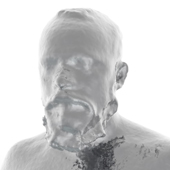The power of scrolling effects in web design is undeniable. Not only do they create a sense of flow and intelligence on a page, but they also create visual interest and encourage user engagement. Scrolling effects can take many forms, ranging from simple hover animations to complex transitions and parallax scrolling. But what are the key advantages of using scrolling effects in web design?
First and foremost, scrolling effects help to create visual appeal. When visitors scroll down a web page, they are taken on an engaging journey through the elements that are featured. By using motion and animation, designers can make a web page more dynamic and engaging for viewers. For example, scroll-triggered animations can add depth to websites and help highlight key content. Additionally, scroll-following effects can be used to keep users engaged in the page, and elements can be linked to scroll positions to ensure that users always have something new to explore.
Another key advantage of using scrolling effects in web design is that they can be used to direct user attention. By taking advantage of motion and animation, designers can draw attention to important areas on the page that they want viewers to focus on. This can be especially effective when used to emphasize key elements, such as promotions or calls-to-action. Furthermore, designers can also use scrolling effects to create visual pathways that guide viewers to specific parts of the page.
Finally, scrolling effects can be used as powerful storytelling tools. By creating transitions and animations that tell a story, designers can take visitors on an emotional journey that enhances their experience. Additionally, these effects can be used to evoke feelings and evoke a desired response from viewers.
Overall, the use of scrolling effects in web design has many advantages. By creating engaging and dynamic web pages, these effects can draw attention, direct user focus, and help tell a story. When used correctly, these effects can be invaluable for enhancing user experience and creating visual interest.
